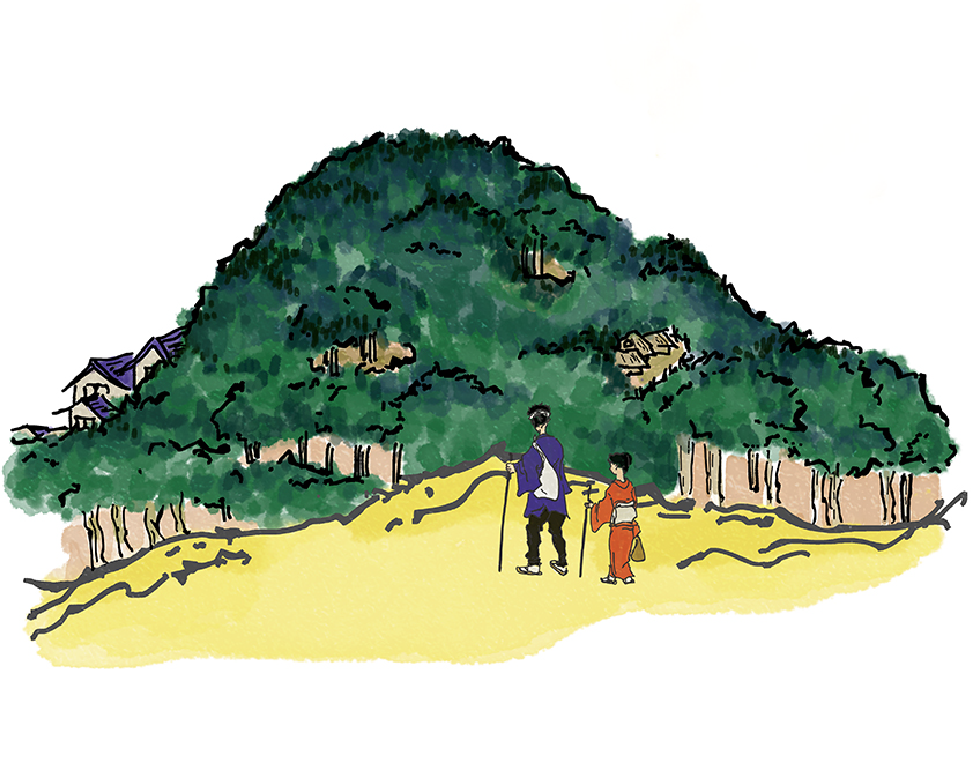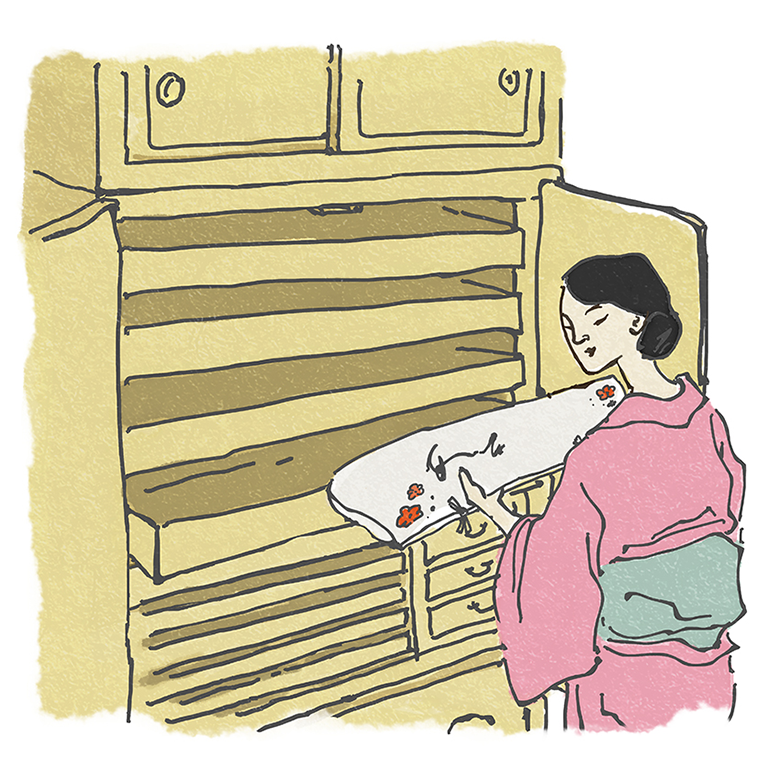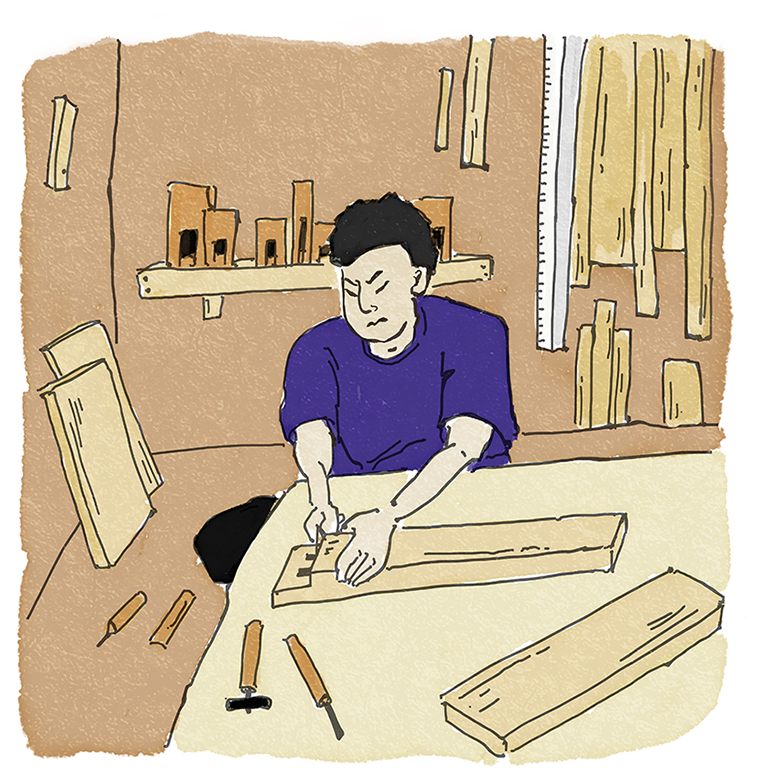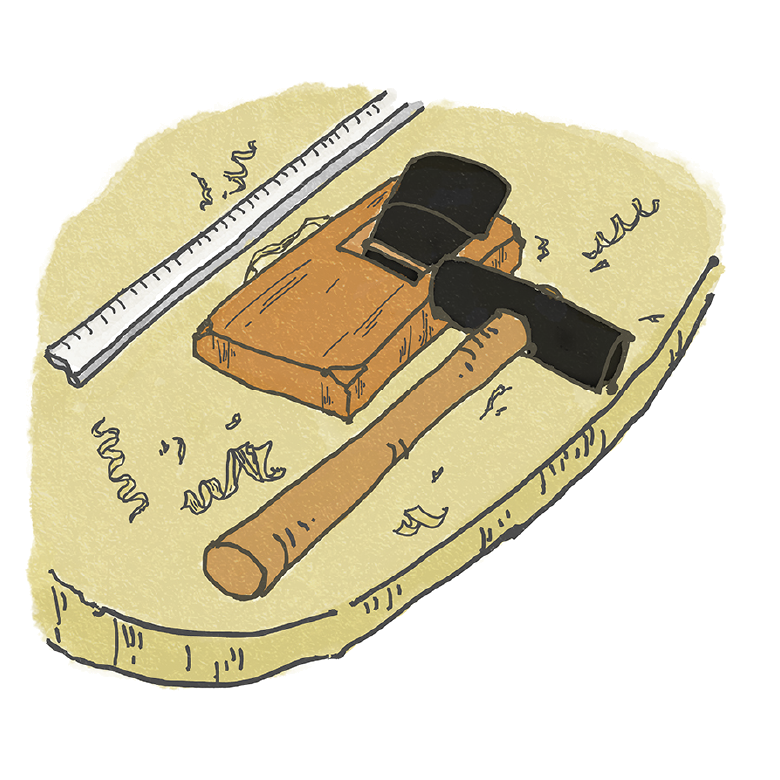



In the Genesis of Azuma, there was a story of "love"
In 1891, the first generation founder of the company built up a prominent lumber business in a renowned paulownia-producing region in Nara Prefecture.
The young man who would later become the second generation proprietor was the foreman in charge of business operations. He falls in love with the first generation proprietor's daughter, and the two young people elope across the difference in their social status.
And they ended up in Wakayama Prefecture. The first generation proprieto must have been swayed by their passion, and perhaps parental love was involved. He gave the young couple a mountain in Wakayama, saying, "Try your hand at business on your own terms."

In "Kii-no-kuni" where the gods of trees reside, the golden era blossomed.
The second generation proprietor started a lumber business in Kinokawa City, Wakayama Prefecture, which is the foundation of the current Azuma. In the early days, many timbers cut from the mountains were transported via the Kino River, and many wooden clog and furniture shops lined its banks. By the time of the third generation proprietor, the company had grown and prospered, crossing domestic and foreign paulownia trees to improve the breed and trading with China and the US.
At the same time, the good-natured personality of the third generation proprietor endeared him to many craftspeople.

A man's feelings for his wife lead to the birth of the new "Kagunoazuma"
The company's history as a lumber company reached a major turning point at the time of its fourth generation proprietor. It was the act of making furniture with their own hands. The fourth generation proprietor's wife loved kimonos, so a paulownia chest was made for her to store her kimonos carefully. The fourth generation proprietor had the business name of Azuma expressed in hiragana rather than by means of a kanji character to express his desire to include his "wife" as well. Kagunoazuma began as a husband-and-wife team. They spared no expense in their pursuit of ideal paulownia chests.

The dream of a young boy was to become the world's finest "paulownia chest craftsman"
The son of the fourth generation proprietor, who had been playing on paulownia logs since he was a child, wrote in his elementary school graduation album that his dream was "to become the finest paulownia chest craftsman in the world." After graduating from college, he went to Kyoto to study Kyoto Sashimono, where he met people associated with the third and fourth generation proprietors. Feeling the "bonds" fostered by the history of the family business, the future fifth generation proprietor became an apprentice of Kunio Naito, a Kyoto master craftsman and the right-hand man of Tatsuaki Kuroda, a Living National Treasure in wood and lacquer craft, and polished his skills in traditional crafts.

Connecting the "thoughts" of many people for a thousand years to come
Upon returning to Wakayama, the fifth generation proprietor received techniques passed down from one generation to the next from a craftsman who was the right-hand man of his grandfather, the third generation proprietor. The skilled craftsmen who supported the fourth generation proprietor also passed on a great deal of his knowledge to the fifth generation proprietor, saying, "These techniques were nurtured in Azuma, so we have to return them to Azuma." History is a line that connects the dots of countless people's thoughts and feelings. The fifth generation proprietor, who inherited the thoughts of many predecessors, has become a traditional craftsman of Kishu paulownia chests and is taking a new step forward in history.

In Japan, before the introduction of chests, it was common to store items like kimonos in a large rectangular box with a lid. However, during the Edo period (1603-1867), as the economy prospered and people became more affluent, they acquired more possessions such as kimonos. It is said that chests became more prevalent during this time to accommodate these belongings.
Among them, paulownia chests were very popular among the people of Edo. The reason for this is said to be that there were many large fires. During the Edo period, there were 47 large fires. Paulownia chests were valued by many people of Edo because they were "light" enough to be carried immediately, even when a fire broke out. Additionally, because they sealed air, they were resistant to "fire" and retained "moisture" well. Thus items sprinkled with water could be protected inside paulownia chests.
The Meiji period (1868-1912) marked the end of national isolation and the blossoming of civilization. The samurai society of the past came to an end, and people began to prefer elegant "feminine" designs for their daily items, rather than "masculine" designs that emphasized sturdiness and practicality.
Paulownia chests, in particular, are furniture mainly used by women, whose role was to "protect the home" in the Meiji era. Many paulownia chest artisans worked hard at their craft to create the beauty of appearance and ease of use that women sought. It is no exaggeration to say that the soft and delicate beauty of paulownia chests born during this period expressed femininity to the fullest, and set the course for later paulownia chests.
World War I, in which Europe was the main battleground, spurred an economic boom in Japan, ushering in the Taisho bubble era. As the economy grew, high-end paulownia chests of drawers were produced one after another, and it is said that two-drawer and three-drawer chests appeared around this time.
Paulownia chests were also at their peak, giving rise to a variety of different styles. Variants were divided into several categories: "Mae-kiri-dansu," in which only the front part was made of paulownia; "Sampo-kiri-dansu" (front and both sides made of paulownia); "Shiho-kiri-dansu" (front, both sides, and back made of paulownia); and "So-kiri-dansu," which were entirely made of paulownia.
After World War II, the goal of the entire Japanese nation was to recover from the wounds of war. Under such circumstances, the lifestyle of Japanese people changed drastically, partly due to the introduction of various aspects of foreign culture, including that from American culture. Demand for paulownia chests declined as they were pushed aside in favor of Western-style furniture.
However, paulownia chests, which are the culmination of traditional Japanese craftsmanship, have an appeal that Western furniture does not have, and its intricate craftsmanship became highly regarded and survived through this period. During the bubble economy, there was a wave of luxury-conscious people, and the need for "something better than others" led to the sale of luxurious paulownia chests. As a result, the price of paulownia chests rose to the highest level.
The bubble economy burst and many people "woke up from their dreams." Many people are now seeking "inner richness" rather than "material richness" as in the past. What is truly "important" to you that is not influenced by society or others? In an era where people seek such things, paulownia chests deliver significant value.
In Japan, there was once a custom that when a girl was born, three paulownia trees were planted in the garden, and when she married, she was given a chest of drawers made from the three grown paulownia trees. Sharing life with family and passing on those sentiments to future generations. From this perspective, paulownia chests can be considered the "furniture of life" that remind us of "what is important" in any age.